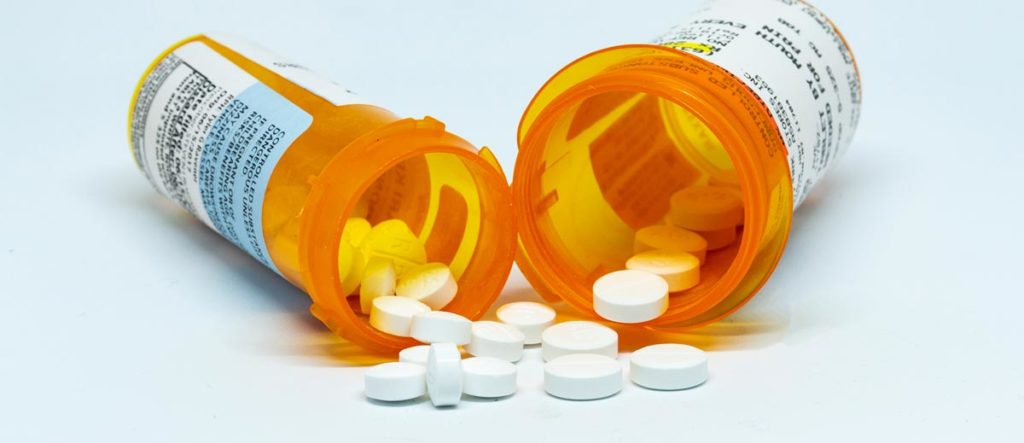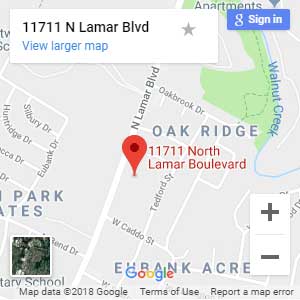Table of contents
- What Are OxyContin and Oxycodone?
- What Is the Difference Between OxyContin and Oxycodone?
- OxyContin vs. Oxycodone: How Effective Are They?
- What Are the Side Effects of OxyContin and Oxycodone?
- What Are Dangerous OxyContin/Oxycodone Drug Interactions?
- How Frequently Are OxyContin and Oxycodone Abused?
- What Are Common OxyContin and Oxycodone Withdrawal Symptoms?
- What Is the OxyContin and Oxycodone Half-Life?
- How Long Does Oxycodone Stay In Your System?
- Treatment for OxyContin and Oxycodone Addiction
- Get Help for OxyContin Addiction or Oxycodone Addiction
If you’re wondering about the difference between OxyContin and oxycodone, they are essentially the same thing.
Oxycodone is an opioid drug that is the main ingredient in many prescription medications, including OxyContin, Percocet, and Percodan. As such, OxyContin is the brand name of an opioid medication that contains the time-release version of oxycodone. Many medical and professional sources use the terms “OxyContin” and “oxycodone” interchangeably because they are the same substance.
Below, we’ll dive more into the specifics of what OxyContin and oxycodone are, the similarities and differences between the two, common withdrawal symptoms, and oxycodone addiction treatment options.
What Are OxyContin and Oxycodone?
OxyContin and oxycodone are both prescription pain relievers that are classified as semi-synthetic opioids. Under the United States Drug Enforcement (DEA), both of these drugs are classified as Schedule II substances, as they are powerful medications that also have a high potential for abuse and addiction.1
Both OxyContin and oxycodone work in the same way: by attaching to certain opioid receptors in the brain. This process changes the way people experience pain, stress, and anxiety while producing a calming, euphoric sensation, and sense of overall well being.
Some people who take OxyContin or oxycodone may begin to associate the drug with these positive effects, which serves as motivation to take them again. This is often the very beginning stage of what may become a substance use disorder or opioid addiction, especially if the person takes prescription opioids consistently over a long time.
What Is the Difference Between OxyContin and Oxycodone?
As mentioned above, OxyContin and oxycodone are two different names for the same substance. They are just two different pharmaceutical formulations of the same prescription opioid medication.
- Oxycodone is an opioid drug and the main ingredient in many prescription medications.
- OxyContin is the brand name of an opioid medication that contains the time-release version of oxycodone. (This means it is slowly released into the body when someone takes it.)
The chart below displays some of the other main differences between oxycodone and OxyContin.
| Oxycodone (immediate-release) | OxyContin | |
| General uses | Treatment of moderate to severe pain, such as following surgery or a severe injury. | Treatment of moderate to severe pain, commonly during the last stages of a chronic disease. |
| Forms | Immediate release tablet, capsule (both can be opened, cut, or crushed), and oral solution | Extended-release tablet (cannot be opened, cut, or crushed) |
| How often to take it | Every four to six hours | Every 12 hours |
| Duration of treatment | Intended for short-term treatment (3 days or less) | Long-term treatment |
| Cost | Generally less expensive than OxyContin because a generic version of oxycodone is available | Typically more expensive than oxycodone, although insurance companies may prefer one over the other |
OxyContin vs. Oxycodone: How Effective Are They?
OxyContin and oxycodone are both regarded as being highly effective for treating pain. Although they are both used to treat moderate to severe pain, OxyContin is usually used to treat the final stages of chronic diseases and oxycodone is used to treat pain after surgery or a severe injury.
What Are the Side Effects of OxyContin and Oxycodone?
Since OxyContin and oxycodone are the same substance, they share the same side effects.
Immediate side effects of taking OxyContin and oxycodone include:2
- Euphoria
- Relaxation
- Reduction of pain
- Reduction of anxiety
- Sedation
Some people may also experience normal but negative side effects of OxyContin and oxycodone, including:2
- Nausea
- Vomiting
- Dizziness
- Drowsiness
- Insomnia
- Constipation
- Itchiness
- Dry mouth
- Weakness
- Headache
- Mood changes
Misusing oxycodone or OxyContin in any way can produce harmful side effects too, like:3
- Confusion
- Anxiety
- Depression
- Agitation
- Strange dreams
- Abnormal thoughts
- Insomnia
- Depersonalization
- Hallucinations
- Respiratory depression
- Seizures
- Physical tolerance
- Addiction
- Overdose
Side effects, signs, and symptoms of an oxycodone overdose may include:4
- Pinpoint pupils
- Shallow breathing
- Vomiting
- Extreme fatigue
- Loss of consciousness
What Are Dangerous OxyContin/Oxycodone Drug Interactions?
Certain drugs or medications can cause harmful interactions when they are combined with oxycodone or OxyContin. These interactions can change the way oxycodone works, prevent it from working, or cause serious or deadly side effects.
Here are some of the most dangerous oxycodone drug interactions that people should avoid.
- Oxycodone and alcohol: Drinking alcohol while taking oxycodone products can be deadly and should be avoided at all times.
- Oxycodone and muscle relaxers: Using various types of muscle relaxers like Gabapentin with oxycodone can cause breathing problems, low blood pressure, or coma.
- Oxycodone and other painkillers: Using oxycodone with opioids that work in the same way can increase your chances of experiencing more severe negative side effects.
How Frequently Are OxyContin and Oxycodone Abused?
Both OxyContin and oxycodone are some of the most abused prescription drugs in the U.S. However, comparing rates of abuse between the two drugs is not typically of any interest to researchers because they are the same substance.
In 2018, the second most commonly misused subtype of prescription pain relievers was oxycodone products, which include OxyContin. An estimated 3.4 million Americans reported using oxycodone products in the past year, which corresponds to 1.2 percent of the population.5 Additionally, in 2019, 2.3 percent of high school seniors abused OxyContin.6
People who abuse OxyContin or oxycodone typically crush and snort the oxycodone. Or, they dissolve the tablets in water and then inject the solution. Since OxyContin is a time-release form of oxycodone, it generally contains more oxycodone than other similar drugs that also contain oxycodone, like Percocet.
This means that when people use OxyContin in any way other than prescribed (taking large or too frequent doses, crushing it and snorting it, or injecting it) they will experience stronger effects. As a result, people who misuse OxyContin may be more likely to become addicted more quickly.
What Are Common OxyContin and Oxycodone Withdrawal Symptoms?
Since OxyContin and oxycodone are basically the same substance, they share the same withdrawal symptoms.
Common OxyContin and oxycodone withdrawal symptoms include:
- Mood swings
- Anxiety
- Agitation
- Irritation
- Restlessness
- Insomnia
- Muscle aches
- Cramps
- Yawning
- Cold or flu symptoms (runny nose, sweating, chills, fever, congestion, etc.)
- Nausea
- Vomiting
- Diarrhea
- Abdominal cramps
- Reduced appetite
- Dilated pupils
- Blurry vision
- Shivering or goosebumps
- Rapid heartbeat
- High blood pressure
OxyContin and oxycodone withdrawal symptoms aren’t usually life-threatening but they can be very uncomfortable, which makes getting through it very difficult. Most often, individuals are encouraged to complete a medical detox program to detox from opioids like OxyContin and oxycodone.
During an oxycodone detox program, medical professionals will help you manage oxycodone withdrawal symptoms and treat them with medication to make sure you’re as comfortable as possible. Clinical counselors also provide therapeutic assistance to help you cope with the emotional and psychological symptoms of oxycodone withdrawal.
What Is the OxyContin and Oxycodone Half-Life?
Determining the half-life of a drug is one way to figure out how long its effects will take to wear off. It takes several half-lives to fully eliminate a drug from your system and the half-life will vary from person to person since each person metabolizes substances at different rates.
- Oxycodone half-life (immediate release formulation): 3.2 hours
- OxyContin half-life: 4.5 to 5.6 hours
How Long Does Oxycodone Stay In Your System?
So, how long does oxycodone stay in your system? And what about OxyContin?
Oxycodone products will generally be fully eliminated from most people’s blood in about 24 hours, but they are detectable in urine, saliva, and hair for longer than that. The corresponding drug test detection times for oxycodone are listed below.7
- Saliva – Detectable 1 to 4 days after the last dose
- Urine – Detectable 3 to 4 days after the last dose
- Hair – Detectable for up to 90 days after the last dose
Treatment for OxyContin and Oxycodone Addiction
Treatment for OxyContin and oxycodone addiction don’t differ very much because opioid use disorder is generally treated with the same proven methods. If you or a loved one is struggling with opioid abuse, you can expect certain components of treatment to remain the same regardless of where you seek out care.
Generally speaking, both OxyContin and oxycodone treatment programs are comprised of the following components:
- Thorough initial assessment: An initial physical and psychological assessment can help treatment professionals determine what type of care is needed. It also provides an opportunity for medical and clinical professionals to identify any additional issues that need to be addressed during treatment, such as mental health disorders, bloodborne illnesses, or malnutrition.
- Medical opioid detox: Detox provides medical and clinical management of uncomfortable opioid withdrawal symptoms, so you can get through detox as safely and as comfortably as possible.
- Substance abuse therapy: Participating in various types of substance abuse therapy can help you identify the underlying causes of your addiction and learn how to make positive changes in your life that will bolster a sober lifestyle.
- Support groups: Attending addiction recovery support groups (either 12-Step fellowships or non-12-Step groups) or community center groups can also support a sober lifestyle and help you connect with other like-minded sober people for support.
- Long-term aftercare: Aftercare that consists of individual therapy, couples or family therapy, a social support system, a sober living program, IOP, or a peer-certified recovery program can all provide structure, support, and accountability as you adjust to a new life of sobriety.
- Participation in treatment for an adequate length of time: Research studies show that adequate time spent in treatment is extremely important and that most addicted individuals need at least three continuous months of treatment to make lasting positive changes. The best outcomes come from longer durations of treatment.8
Get Help for OxyContin Addiction or Oxycodone Addiction
If you’re struggling with an opioid use disorder, you’re not alone. Oxycodone treatment programs are available for those who need them and with the right support and treatment, you can achieve a sustainable and happy sober life.
Please call (888) 857-0557 to speak with a Briarwood representative and get more details about our oxycodone detox program in Austin and Houston.
References:
- https://www.dea.gov/sites/default/files/2020-06/Oxycodone-2020_0.pdf
- https://medlineplus.gov/druginfo/meds/a682132.html
- https://www.drugabuse.gov/publications/research-reports/misuse-prescription-drugs/what-classes-prescription-drugs-are-commonly-misused
- https://www.healthline.com/health/hydrocodone-oxycodone-overdose
- https://www.samhsa.gov/data/sites/default/files/cbhsq-reports/NSDUHNationalFindingsReport2018/NSDUHNationalFindingsReport2018.pdf
- https://www.drugabuse.gov/drug-topics/opioids/opioids-trends-statistics
- https://www.healthline.com/health/how-long-does-oxycodone-stay-in-your-system
- https://www.drugabuse.gov/publications/principles-drug-addiction-treatment-research-based-guide-third-edition/principles-effective-treatment


